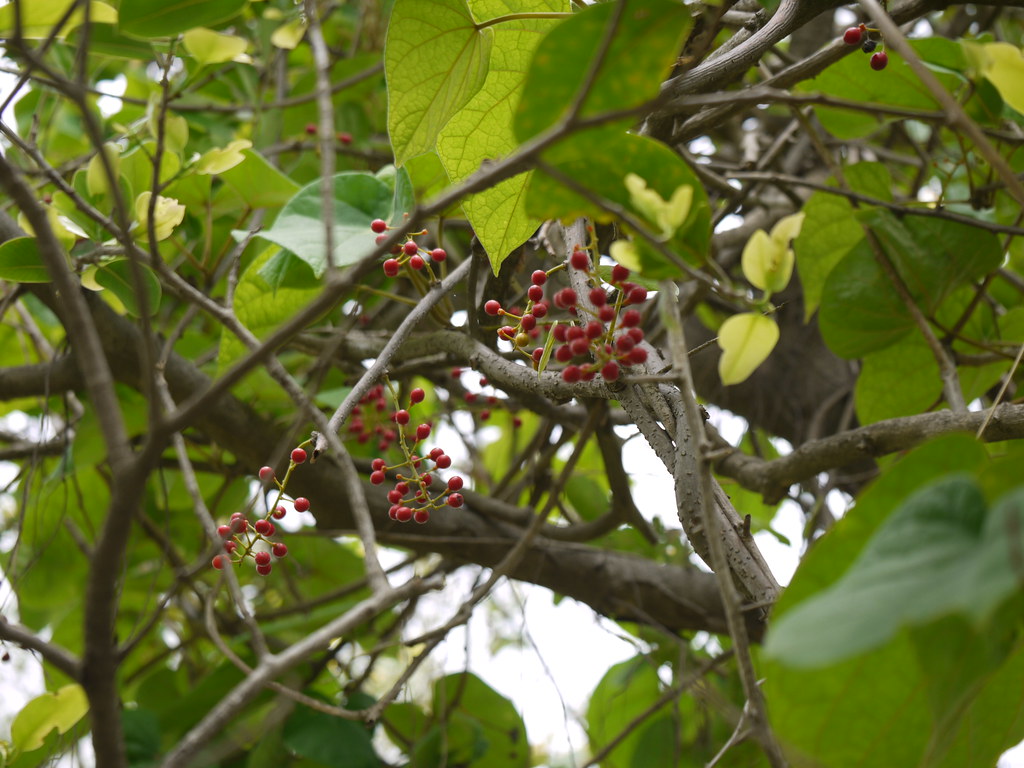- Lower back pain or pain in the legs
and joints caused by Wind Damp painful obstruction, with
Millettia
dielsiana- Ji xue teng.
[1]
- Localized heat, redness, swelling, and pain associated with traumatic injury.
Use with
Rehmannia glutinosa- Sheng
di huang,
Paeonia suffruticosa- Mu
dan pi,
Boswellia serrata- Ru xiang,
Commiphora
myrrha- Mo yao.
[1] Tinospora
sinensis. 宽
筋 藤 Kuān jīn ténɡ- "vine
that loosens the sinews"
Family: Menispermaceae
Tinospora
sinensis. 宽
筋 藤 Kuān jīn ténɡ- "vine
that loosens the sinews"
Family: Menispermaceae
